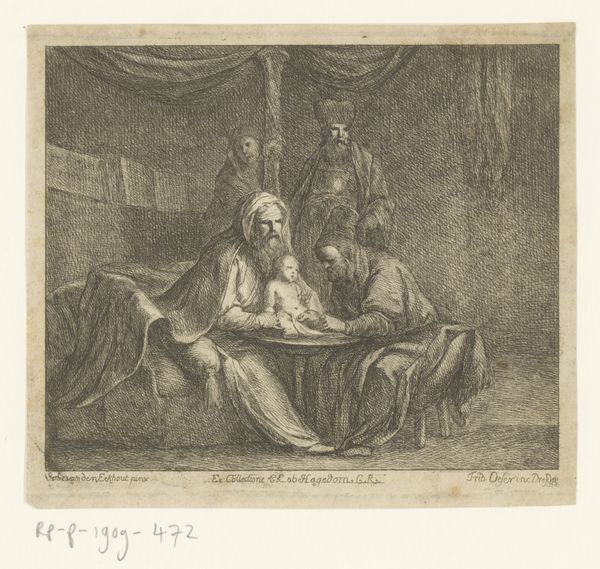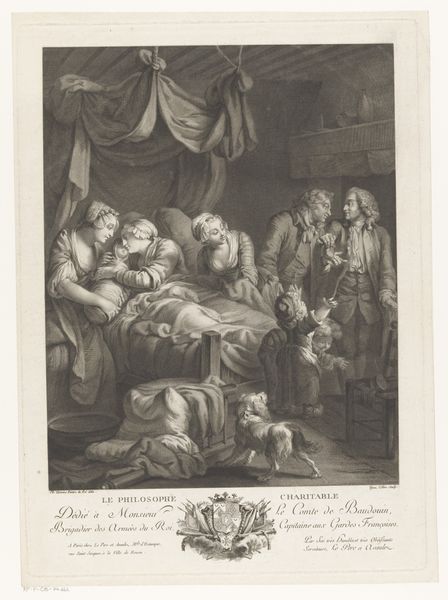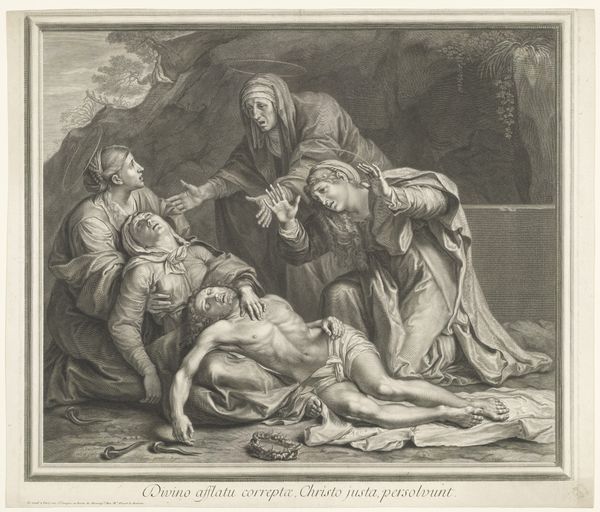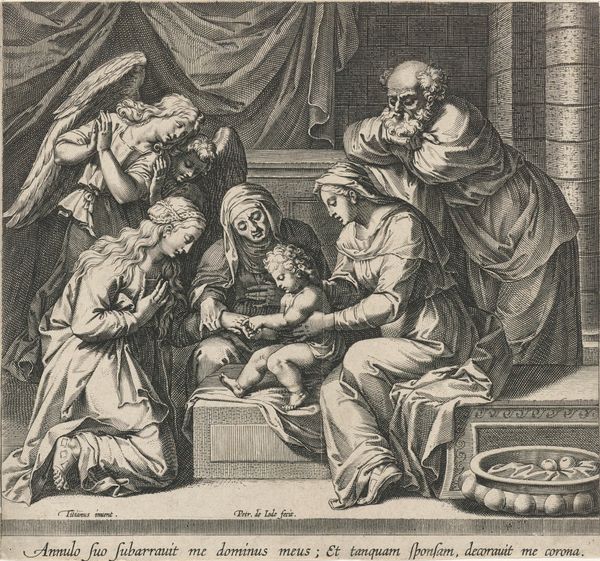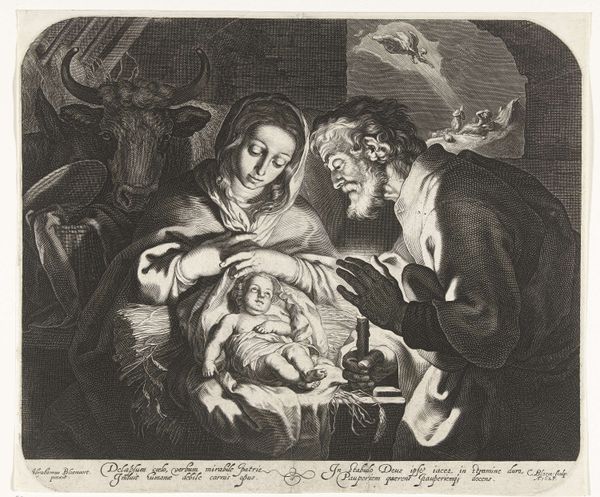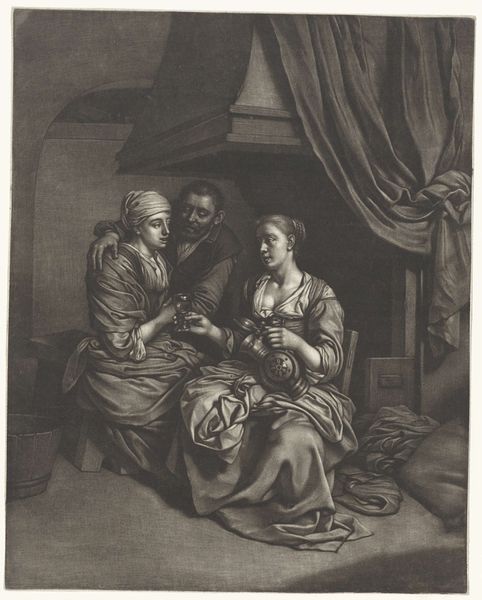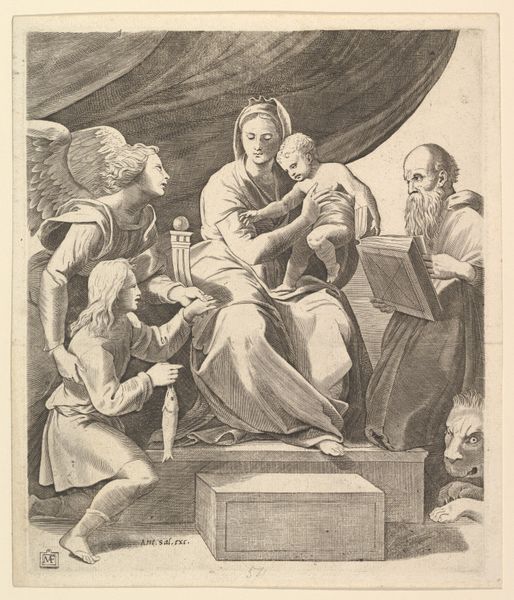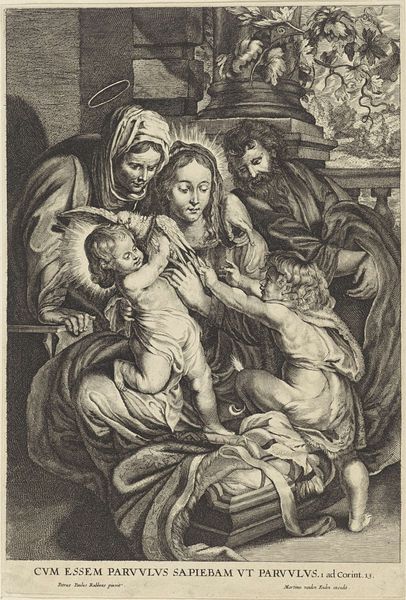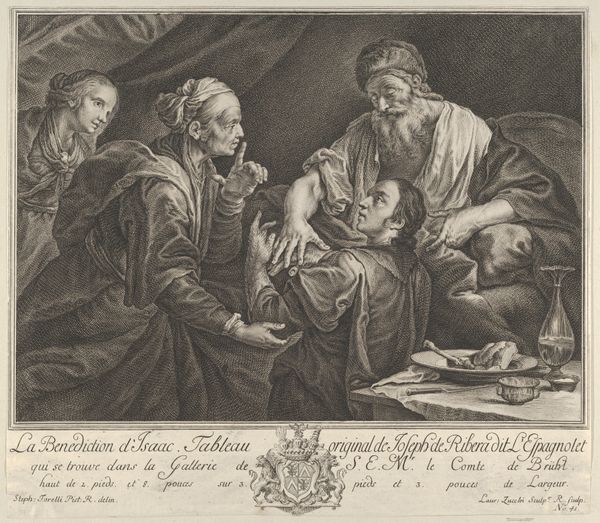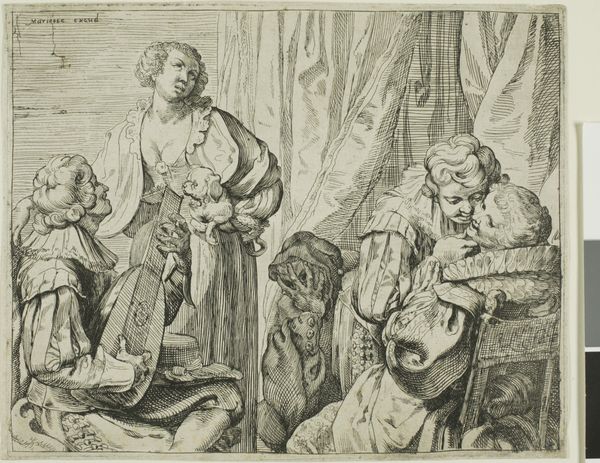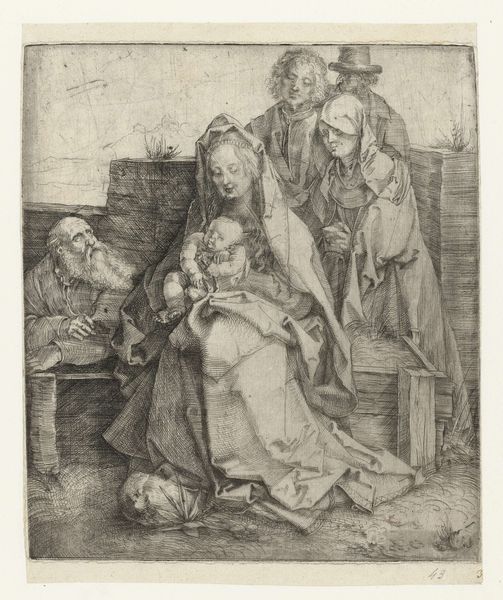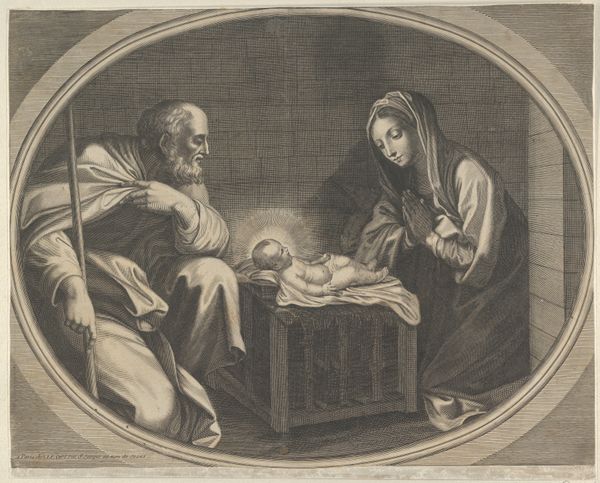
intaglio, engraving
#
portrait
#
allegory
#
baroque
#
intaglio
#
vanitas
#
genre-painting
#
history-painting
#
engraving
Dimensions: height 280 mm, width 347 mm
Copyright: Rijks Museum: Open Domain
Curator: This engraving, likely from between 1661 and 1695, is titled "Woman with a comb looks in a mirror". It's attributed to Alexander Voet, I, though its specific context remains somewhat elusive. What strikes you first? Editor: A trio presenting vanitas. Immediately I register the image as a potent indictment of female vanity and its links to patriarchal constructions of femininity, specifically concerning the dangers of unchecked self-admiration. Curator: Intriguing. The symbols, steeped in cultural meaning, seem almost performative here. Note the central woman engrossed in her reflection, seemingly oblivious to the figures flanking her – the elderly man presenting a skull and the jester gesturing towards the mirror. The skull, the very emblem of mortality, sits beside her blind self-fascination. Editor: Yes, the performativity resonates. Consider that even mirrors within that era, often crafted from polished metal, distorted images – beauty was already filtered through technological means! Further, the composition emphasizes a power dynamic. The woman occupies a higher, seated position, while the older male figure offers the skull submissively from below. The text scroll hovering above repeats 'know thyself', but seems to be pointed squarely at the female subject, thus becoming an accusatory injunction instead of simple advice. Curator: Precisely, The gaze then becomes central. Is she seeing herself, or who she thinks she ought to be? Is the mirror truly a tool for self-discovery, or for perpetuating constructed illusions? Even the comb seems laden with meaning: an object employed to achieve socially dictated beauty standards. Editor: I agree. I want to also think about audience; who was Voet’s print intended for? We are primed by so much scholarship on visual representations of women being tied directly to control – by men. This is an historical morality lesson on women, as seen by a male engraver in a print possibly designed for a male gaze. Curator: Well put. This is more than just about transience; it confronts cultural beliefs. Perhaps the symbolic density itself aimed to provoke this discourse on how self-knowledge intertwines with appearance. Editor: Exactly, images are powerful and do not exist in vacuums. Considering the broader socio-historical picture lets us dissect the underlying anxieties mirrored here.
Comments
No comments
Be the first to comment and join the conversation on the ultimate creative platform.

